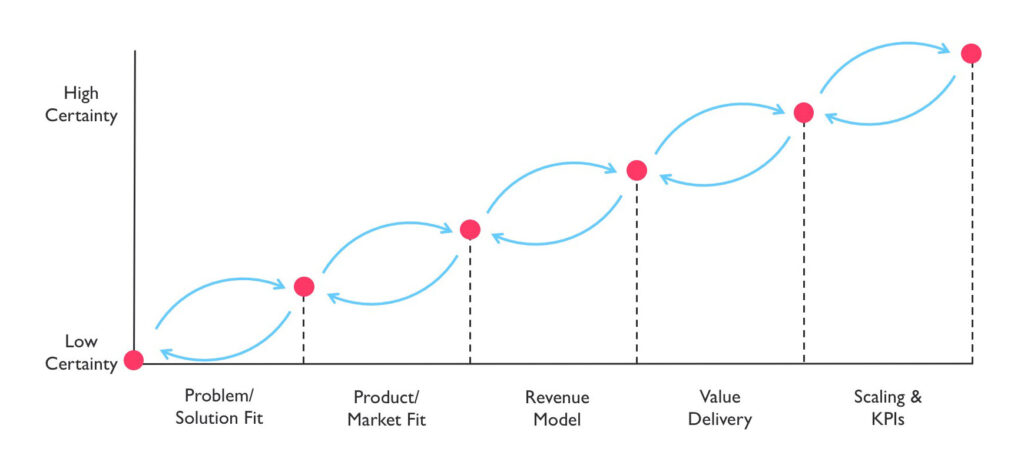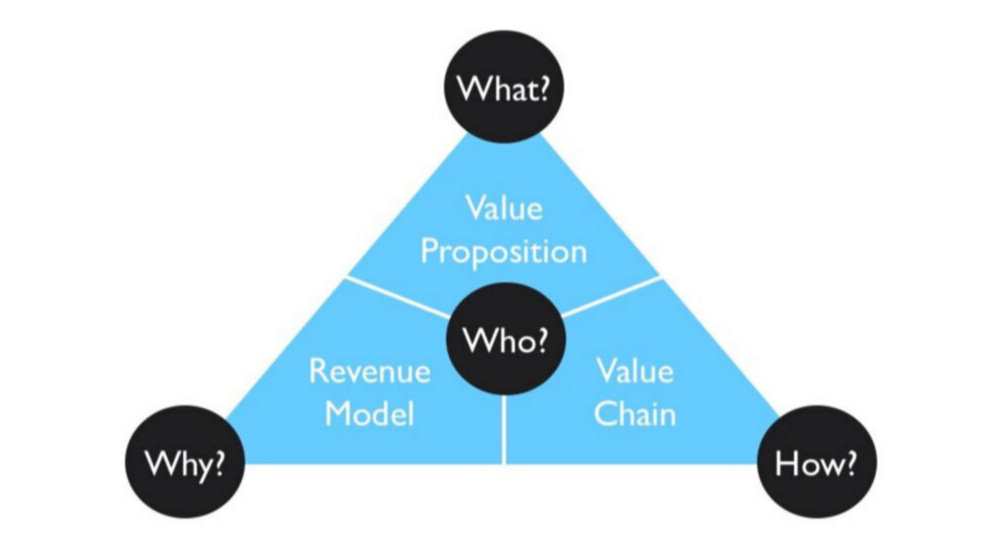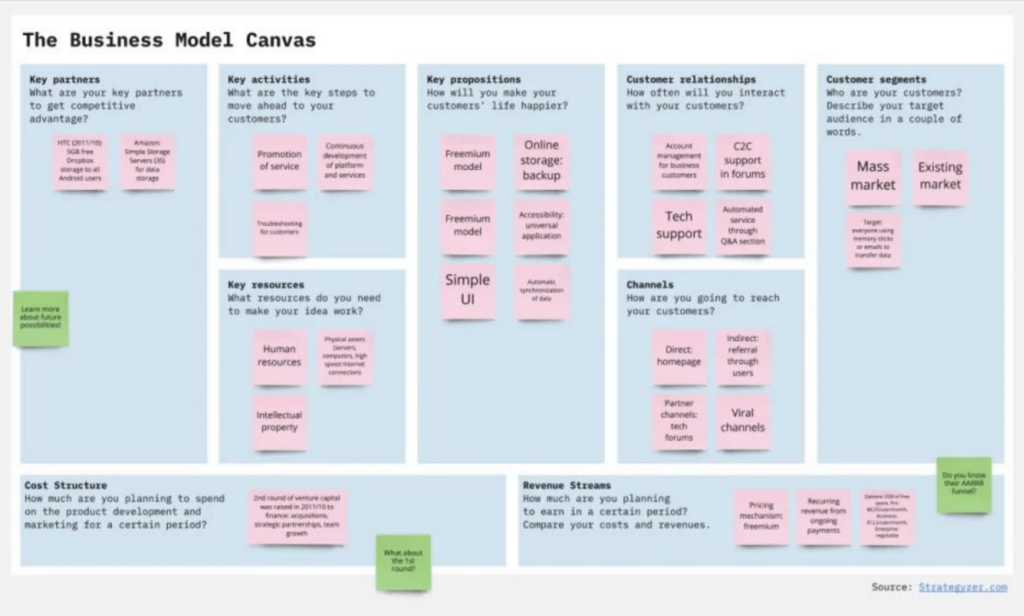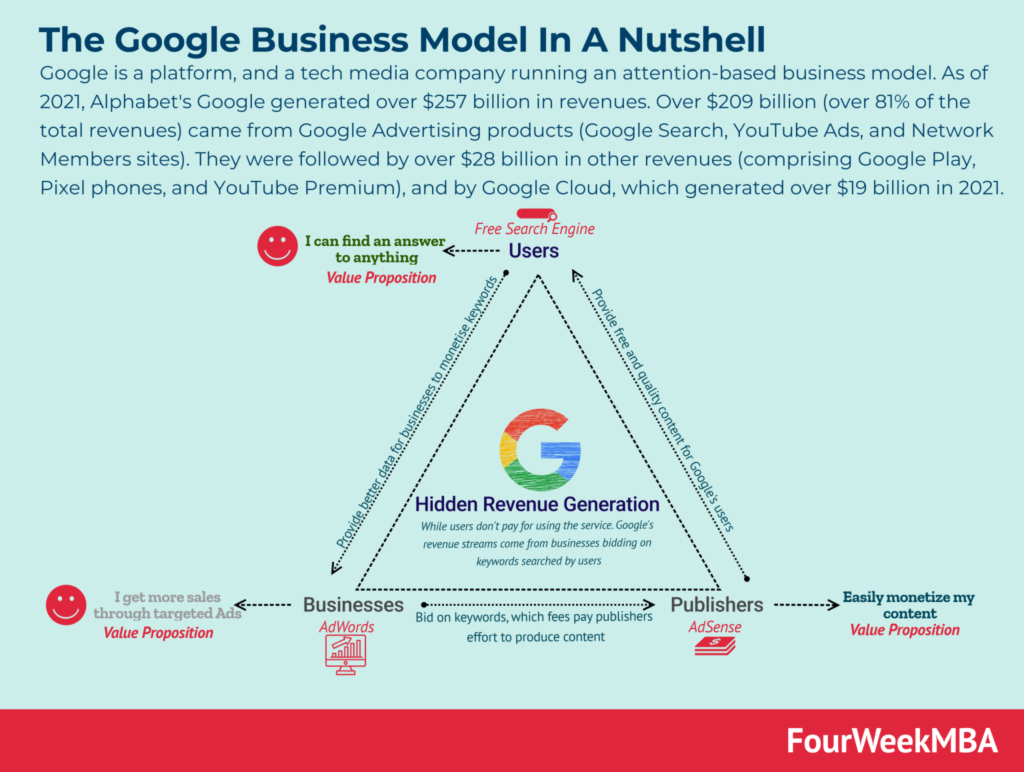Businesses have never had it so good. Companies – from start-ups to scale-ups to enterprises -can reinvent established industries, solve consumer pain points in increasingly innovative ways, generate revenue fairly and profitably with usage data, and access a global audience in just a few clicks.
If you want to bring your business into the digital world and exceed customers’ expectations with technology or turn your innovative idea into a digital-first business, the first step is to develop a digital business model that fits the purpose.
But how can you get started?
It all starts with a good idea and thinking critically. Keep in mind that not all companies technically need a digital business model. Car rental companies don’t need a computer to track distance or fuel consumption, technically. Magazine companies don’t need a digital database of their customer subscriptions. However, these businesses are greatly enhanced using digital technologies. With digitization, you can not only stay in business, but excel – it’s just a matter of being aware of it.
Think of how Amazon, Uber, Tesla, and Netflix have successfully captured their respective sectors. They create value that would be impossible without technology. These businesses rely on digital technology to innovate their industries—meaning they’ve built robust digital business models through plenty of trial and error. They used digitization and tenacity to differentiate and create a truly unique competitive advantage.
And if they can do it, so can you. This is not an empty promise, but a reality in this day and age.
Let’s look at how you can create an innovative digital business model that is not just any old subscription.
Get to know the five elements at the heart of all great digital business models. Familiarize yourself with the nine areas of your digital business model canvas that you need to optimize if you want your business to reach the stars and learn why implementing a billing and monetization software is essential for the success of innovative digital business models.
Table of Contents
What makes a good idea for an innovative digital business model?
Inspired ideas are at the heart of all innovative businesses, but as it is with inspiration, you never know when it will strike. So be prepared and download our business model canvas (starts a PDF download) to jot down initial ideas, notes, and recommendations as they come to you. Who knows, reading this blog might even help you get your creative juices flowing!
Now that we’re ready to begin, let’s dig into the five key considerations when brainstorming the perfect idea for a digital business model.
1. Understand and solve customer problems first
Airbnb co-founders Brian Chesky and Joe Gebbia founded1 the company after realizing how difficult it was to find short-term accommodation in San Francisco during the Industrial Design Conference. They homed in on an incredibly specific problem that they had personally grappled with and built a digital solution to solve it, connecting homeowners with a spare room with travelers looking for a place to stay.
Airbnb is a truly digital business—all customer acquisition, payments, and logistics are via its online marketplace. While they could feasibly achieve this without technology, it would be tremendously more resource intensive. Therefore, the innovation isn’t that it’s digital—it’s that Airbnb provides value at an affordable rate purely because it’s digital. It wouldn’t be possible otherwise.
2. Understand that a digital business model does not imply a purely digital value proposition
It’s important to note that digital business models can include non-digital value propositions. Uber might operate according to a digital business model (with customer acquisition, orders, payment, and all-around logistics taking place via their app), but it’d be useless unless a physical car arrives to pick up passengers.
Likewise, Klickrent2 —a German construction machinery hire company—is technically a digital marketplace, though its value proposition relies on users being able to rent physical equipment. The sector-changing innovation that digital technology delivers can be as straightforward as lower prices or an enhanced customer experience. Of course, this still requires creating a digital business model, as these innovations would be impossible without the use of digital technologies.
More recently, Heidelberg University Hospital partnered with Storz to create one of the most cutting-edge, groundbreaking high-tech hospitals in Germany. They can drive incredible value using a subscription model and offer second-to-none medical care. Check that out on youtube3.
But don’t fall into the trap of thinking innovation is reserved for only the sharpest, most scientific minds of our time. If you’ve found a way to use digital technology to help solve customer problems more efficiently, easily, enjoyably, or cost-effectively, that’s essentially the description of business innovation today!
3. Replace assumptions with facts
Assumptions, inspiration and gut instinct might create the initial bright idea for a digital business, but founders quickly need to replace assumptions with facts if they want their business to succeed. For example, founders might have various assumptions surrounding their consumers’ needs and behaviors, the resources required to kickstart their business, the implementation time, project cost, or in-house capabilities.
While these are okay, to begin with—after all, nobody knows exactly how things will turn out—founders must focus on replacing their hunches with data-driven facts. They must quickly identify whether they have the right problem/solution fit, product/market fit, revenue model, value delivery, and scaling approach/KPIs.

4. Stay lean and keep investment costs low
As exciting as it is to start a new venture, don’t immediately dive in with both feet. Be thoughtful. Stay as “lean” as possible, creating minimum viable products (MVPs) and acquiring your first customers with as few overheads as possible (rent, staff salaries, and so on).
Try to identify if there genuinely is a market need—and whether consumers will pay for your digitally-enabled offering. There’s a ton of uncertainty at the beginning stages of a new venture, so keep your risk as low as possible.
5. Make sure everyone’s on the same page
Be thorough, thoughtful, and consistent with your planning. Make sure everyone’s pulling in the same direction and that you’re all driven by the same guiding principle (aka, North Star). This is harder than it sounds. Consider that departments tend to understand North Star metrics differently, given their different perspectives and capabilities. However, by taking the time to ensure team-wide buy-in and comprehension, it’ll be far easier to successfully develop and test new digital business models while keeping the end goal in mind.
Once you’ve established the foundations above, it’s time to start modeling your business on a more granular level.

Discover how Nitrobox enables innovative businesses
Recurring Billing
Discover how our robust billing automation helps you to launch and scale any complex business model
Subscription Management
Automate the entire customer lifecycle and create offers to delight your customers
The nine-step digital business model canvas
You likely already have some familiarity with digital business models, and you might’ve even started to develop your startup/scaleup’s latest model. However, if you’re struggling to get your shiny new digital product or service off the ground—or you want to confirm you’re following the right approach—here’s how to create the perfect digital business model canvas.
There are nine key focus areas in a digital business model canvas. If you can nail each of these, you’ll be on your way to creating a valuable and profitable digital business.

1. Key partners
Which other companies can you partner up with to gain a competitive advantage? For example, you might use Amazon Web Services (AWS) for your cloud computing needs or partner with DHL to deliver physical goods to your customers.
2. Key activities
Which activities will offer the most bang for your buck, helping you attract new customers while also providing invaluable feedback that will help your business grow? This might include releasing an MVP to customers, asking customers for their feedback (and implementing their suggestions), troubleshooting commonly occurring issues, and so on. If you’re just getting started, consider prioritizing strategic projects that will increase your confidence in your product/market fit, which will help set the rest of your business up for success.
3. Key resources
Which resources does your business require to operate at maximum potential? These can include human resources, intellectual property (IP), and physical assets (servers, computers, and high-speed internet connections). While this definition of “resources” is quite vague and wide-ranging, this is deliberate, given that your requirements will differ from everyone else’s.
It can also include software that handles complex billing/tariff models for electric charging. For example, Nitrobox simplifies accounting, billing, and payment management for digital business models. It provides customizable booking rules for different accounting purposes, allows businesses to configure their taxation requirements by product, country, and customer type, provides individual invoice templates per country and tenant, and integrates with multiple payment service providers and payment methods. If you’re in the process of taking a digital business model to market and need to build for scale, Nitrobox is your partner.
4. Key propositions
Your key propositions make your company stand out from the competition. How do you differentiate, what’s your competitive advantage? What’s your key value proposition or unique selling point (USP)? In other words, what do you do differently than your competitors that add significant value to customers’ lives? This might include increased customization possibilities, a personalized service, lower prices, or a more convenient service. Make sure you include how you want to price and monetize your business model here, and how you plan to validate them.
As an example, Uber differentiated by reinventing the taxi industry, enabling consumers to pay via their phones, share precise pickup location data with their driver, and track their journey in real-time. Your USP should directly solve the customer problem(s) you identified in the foundational steps above.
As a marketing tip, remember to always connect your messaging, positioning, and product features with customers’ problems. For instance, “Nitrobox is an enterprise-grade monetization platform built for scaling companies, large and small, with an eye for international growth.”
5. Customer relationships
What type of relationships does each of your customer segments expect you to establish and maintain with them? And on which channels? For example, you might decide to provide one-on-one account management for business customers, tech support, C2C support via forums, automated chatbots on your website, and so on. You could even use top-tier customer support as a differentiator—it’s certainly worked for us!
6. Channels
Which channels do you use for awareness, evaluation, purchase, delivery, and after-sales support? Which channels are good for acquiring customers, retaining them, or enriching their experiences? Out of these channels, which offers the greatest return on investment (ROI)? Consider putting most of your eggs in one basket and focusing mostly on one channel alone, first, before attacking the next one. Multi-channel strategies are essential, but you only get there after plenty of experimenting, failing, analyzing, and optimizing.
7. Customer segments
Who are you targeting, and which problem(s) are you looking to solve? Are you going after the mass market or looking to disrupt an existing market? It’s a good idea to get as specific as possible. Additionally, certain customer segments are accessible only on certain channels! For example, Wetransfer’s target audience is something like ‘everyone using memory sticks or emails to transfer data.’
8. Costs structure
No, this doesn’t refer to pricing or monetization. Instead, it’s about your main costs—what do you need to spend money on to keep your business running profitably? Imagine Google, for example, which spends primarily on traffic acquisition costs, data center costs, R&D costs, and sales and marketing costs.
9. Revenue streams
What are your main revenue streams? How do your expected costs compare to your expected income? Which revenue models/monetization strategies will you adopt, e.g., freemium, recurring revenue from ongoing subscription payments, or sponsorship from companies looking to advertise on your platform?

Tool up and take on the world
It’s never been simpler to start a global business. Digital technologies connect companies with consumers worldwide, providing even the smallest ventures with instant access to the global market. However, many businesses get stuck in the mud trying to wade their way through the complexities of monetizing their enterprises.
This is where Nitrobox can help. We envision a world where everyone can build a global business without worrying about the complexities of monetization. Our solution provides an agile and dynamic monetization solution, supporting companies’ digital business models from order to cash.
Nitrobox customers no longer think about whether or how they can monetize a digital business model—they simply do it. Find out more by booking a demo with a member of our team.
Sources:
1: https://www.businessinsider.com/how-airbnb-was-founded-a-visual-history-2016-2?r=US&IR=T
2: https://www.klickrent.de/
3: https://www.youtube.com/watch?v=RRxsy-ow4aE
4: https://fourweekmba.com/cost-structure-business-model/

